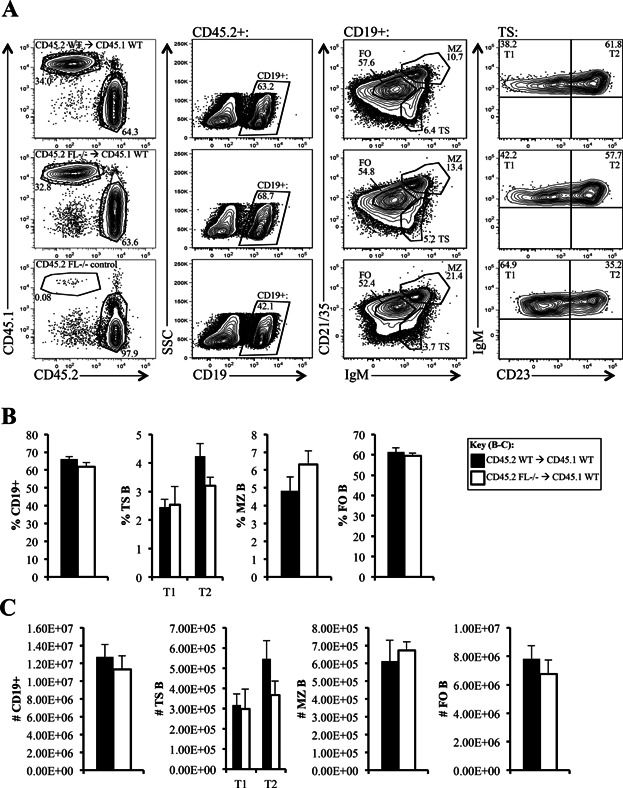Figure 3.

Cell extrinsic defect in peripheral B cell maturation in FL-/- mice. (A) Flow cytometric analysis of splenic B cells from a representative host CD45.1 wild-type (WT) mouse that received 2 million CD45.2 WT BM cells (top panels) or CD45.2 FL-/- BM cells (middle panels). CD45.2 FL-/- mice served as uninjected controls (bottom panels). At 10 weeks, spleens from these mice were harvested and initially analyzed for CD45.1 versus CD45.2 to identify transplanted cells as CD45.2+. CD45.2+ were further fractionated using CD19, CD21/35, IgM, and CD23 to examine total CD19+, TS, MZ, and FO B cell subsets. TS B cells are further stained using CD23 to characterize CD23− T1 and CD23+ T2 B cells (far right panels). (B and C) Bar graphs illustrating the frequency (B) and numbers (C) of total CD19+ and T1, T2, MZ, and FO B cell subsets in the spleens of CD45.1 WT hosts that received CD45.2 WT (black) or CD45.2 FL-/- bone marrow (white). Error bars represent mean +/− SEM. (B) Frequencies reflect the proportion these cells represent within the CD19+ fraction of spleen. (A–C) Data is representative of five chimeras per group.
